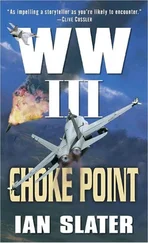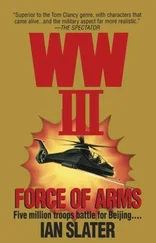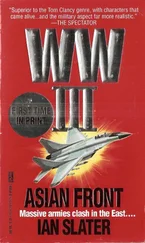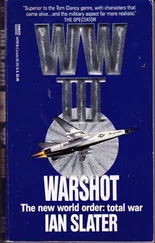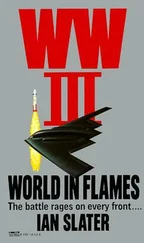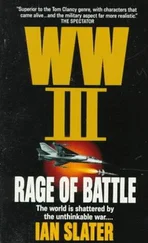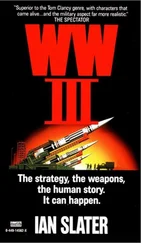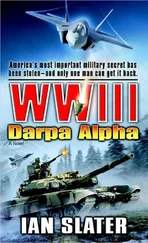Lieutenant Rhee recalled the story of how the seventy-year-old legendary American general, risking all, had done something that, to even some in the U.S. Pentagon itself, seemed at best ill-conceived, at worst insane. Withdrawing the vitally needed 1st Marine Division from the Pusan pocket, MacArthur used the Marines to spearhead an amphibious assault by the American X Corps against Seoul’s port of Inchon, well over two hundred miles to the northwest of the Pusan pocket. The sheer audacity of it, a long, overextended Marine, air and naval left hook deep behind enemy lines, at a place where both natural and man-made port obstacles made it markedly unsuitable for any such landing, astonished the world. It had stunned the NKA troops, and severed their already overextended supply line.
Now Colonel Kim and Park were, like Rhee, remembering the landing. Every graduate of the harshly disciplined NKA staff college was required to study MacArthur’s strategy. The American general, Colonel Kim reminded Major Park and Lieutenant Rhee, had snatched victory from defeat by forcing the NKA on the defensive at Inchon. With the NKA having suddenly to throw all it had into trying to contain MacArthur’s brilliant landing, the beleaguered Eighth Army in the Pusan pocket was not only able to hold its ground but to effect a breakout. Suddenly the pursuing NKA was the pursued. Which was why now, all these years later in Kosong, Kim’s mention of “Inchon” had so quickly nullified Major Park’s initial disdain for young Rhee’s reminder that the American gangsters “have helicopters.” Park realized that if there was to be an American reprisal for the terrorist attack against the three airliners, it might not be a direct line of attack but very indirect, like MacArthur’s deep thrust behind the NKA’s front line.
In any event, the three men took comfort from the hope that the Americans, despite their opulent logistical capability, would be unable to make any attack, direct or indirect, for at least two to three weeks, given the formidable line of rapidly approaching thunderstorms. The rain in them would blind even the most sophisticated helicopters, except perhaps for the renowned Pave Low. Besides, the coast north and south of Wonsan fairly bristled with NKA radar posts.
“I have to go,” Kim announced abruptly. “All we can do is stay sharp.”
It was 1600 hours, the earlier Prussian blue of the East Sea now a brooding expanse as the line of thunderstorms moved ominously southward down North Korea’s sullen east coast as the three officers dispersed from their meeting, Colonel Kim on an unannounced inspection in the tense, tight air of the DMZ’s Panmunjom, Lieutenant Rhee to his Beach 5 unit, and Major Park to Wonsan Harbor, sixty miles north of Kosong, where he was liaison officer between the army and east coast elements of the North Korean East Sea Fleet, whose 236 combat vessels were responsible for the defense of North Korea’s rugged east coast all the way north from the DMZ to the Yalu, Amur, and Ussuri rivers on the border with China and Russia.
At 1620, Rhee radioed the five section leaders of his Unit 5 patrols. Although, as Colonel Kim had said, it would take the American gangsters a while to prepare any assault they might be contemplating, the lieutenant wasn’t going to be so foolish as to slacken off from sending patrols fanning out into the hills around the Kosong warehouse. It would keep his men on their toes, though he did admit to himself that there was a problem, something that every military and civilian leader knew about, namely that if you place people on constant alert, they become blasé. The Americans were discovering this, even with their graduated five-stage color-coded Homeland Defense warnings. Rhee knew that it wasn’t that people became lazy, but rather physically and emotionally tired of living in a state of maximum readiness.
To alleviate the strain on his fifty-five-man defense unit, he told them about the twenty-five off-road vehicles he had requested, through Colonel Kim, from Pyongyang. For soldiers burdened with long garrison duty on their feet, the possibility of gunning through the hills around Kosong, mounted on a brand-new — well, used — Red Dragon all-terrain vehicle was a treat to look forward to.
General Douglas Freeman and his small but heavily armed eight-man Special Forces team were carrying out a final weapons check on “the beach,” the steel strip three decks below McCain ’s island on the open-to-air section of Elevator 2, where on occasion McCain ’s personnel sunbathed in the warmer climes. Here a ten-man launch party, selected by XO John Cuso and classified “top secret”—no other ship’s personnel allowed — carefully removed the khaki-colored all-weather plastic wrap from the long triple-hump “equipment” and saw that what they and Omura’s spy on Oahu had assumed was an improved Chinook chopper with its two rotorless mounds and a centrally positioned engine or radar hump was instead a sixty-five-foot-long tear-shaped gray craft, nine feet wide at one end tapering to a six-foot-wide wedge at the other end.
To XO John Cuso, gazing down at it from the control bucket of the hydraulic arm that would slowly lift the craft from the “beach” in a stork-and-baby canvas sling and lower it to the sea’s surface, the top-secret ALWAC–XP — Advanced Littoral Warfare Craft, Extra-Powered — that had been loaded in and flown from Hawaii with Freeman’s eight-man team on the Galaxy and then drogue-chuted on its pallet to McCain , resembled the outline of a giant, polished gray cigar tube, one end spherical like a nuclear sub’s, the other end tapered — or rather, pinched — into a wedge-shaped bow. Cuso’s initial impression, however, like that of the others in McCain ’s launch party who had been privileged to have laid eyes on the craft, had to be somewhat modified by the fact, as explained by General Freeman, that once this top-secret naval “surface” craft dived below the surface, its revolutionary lightweight composite V-shaped hull became the hull not of a surface ship any longer but of a submarine of only sixteen tons displacement.
“Two in one,” Freeman told Cuso proudly. “And,” Freeman continued, his outline, like that of the ALWAC, only dimly visible in the sick, yellowish penumbra of the hydraulic arm’s sodium arc light, “sixty miles an hour on the surface, fifty below. That’s revolutionary technology with a capital ‘R.’ ”
Cuso took advantage of Freeman’s attention on the launch to edge away from the legendary general, whose kimchi breath was as eye-wateringly pungent as that of Tavos nearby and the other seven men in Freeman’s team. The general, without taking his eyes off the big hydraulic crane and its canvas sling that cradled the ALWAC–XP craft as it was being lowered, further explained to John Cuso how the unusual shape was the result of pioneering work done by American naval architects and engineers in Greenport, New York, who had been given the task of designing a compact, fast, air-transportable, clandestine craft capable of carrying an eight-man Special Ops team and 2,200 pounds of ammo and provisions for at least 450 nautical miles.
Apart from the extraordinarily light weight of the craft, due to cutting-edge carbon fiber technology, there were another two unglamorous but vitally revolutionary aspects of the surface-planing-cum-submersible vessel. First was its MUSCLE — massive unit small cell lithium energy — system, whose batteries were markedly better both in power and full-capacity life cycles than the normal silver-zinc systems, and second was the craft’s rounded carbon composite stern, which became its bow once the XP — extra-powered — craft was submerged. This metamorphosis of bow becoming stern, and vice versa, gave rise to the ALWAC–XP’s less formal name of reversible-submersible, or “RS,” as Freeman, Aussie, Salvini, and Choir called the craft, whose steering computers would be operated by the two SEAL technician specialists, Gomez and Eddie Mervyn. Not only was the RS a dry-delivery vehicle, unlike the prototypical surface-planing wet submersible, but it had superior maneuverability, akin to the experience of an automobile driver who, having had to work a standard shift, now had the luxury of automatic. In the RS, this left the pilot and copilot of the aerodynamically contoured craft more time to deal with what the general referred to cavalierly as “minor impedimenta.” The latter included enemy submarines, acoustic mines, antisubmarine nets, and North Korean gunboats, which, manned by paranoid crews and driven by high-powered Chinese engines, patrolled the North Korean littoral 24-7 all the way from the DMZ just south of Kosong to the Chinese/Russian/North Korean “boot” in the far north. Such patrol boats were looking for everything from American vessels to “fluttering swallows” who continued to rendezvous with Korean and Chinese smugglers, whose only loyalty was to the portrait of Benjamin Franklin on hundred-dollar U.S. bills.
Читать дальше

